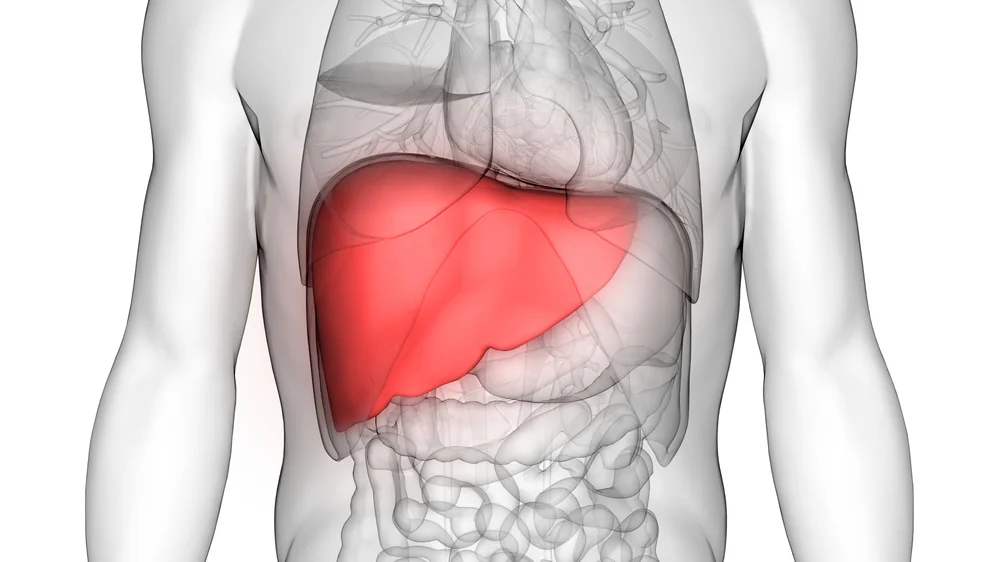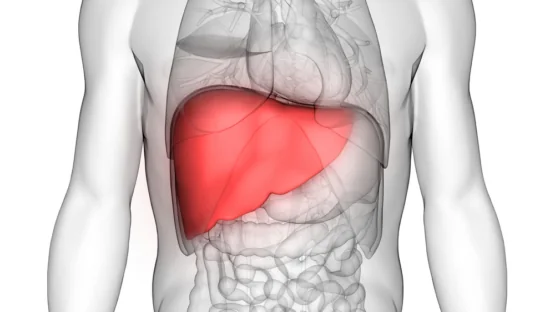Chinese scientists have found that the liver removes amyloid-β from circulation in mice, which also decreases its levels in the brain. The age-related impairment of this process might offer a new clue for fighting Alzheimer’s disease [1].
The janitor of the body
Despite the flop-laden history of the amyloid-β-centered approach to Alzheimer’s, there is still a lot of data suggesting that this misfolded protein has a lot to do with the disease’s progression. One hypothesis says that amyloid-β (Aβ) plaques are rather a late symptom rather than a cause of Alzheimer’s, and Aβ clearance should be conducted much earlier.
About 40%-60% of Aβ that originates in the brain is transported to the periphery through the blood-brain barrier and cleared from the body [2]. However, until now, scientists knew little about how this happens. In this new study, the researchers investigated the possible role of the liver, the main junk-clearing organ in the body.
Interestingly, liver disorders, such as fibrosis, NAFLD (non-alcoholic fatty liver disease), cirrhosis [3], and even simply abnormal levels of liver enzymes have been linked to Alzheimer’s disease via multiple biomarkers [4]. Several Alzheimer’s-associated genes are highly expressed in hepatocytes (liver cells) [5].
Out from the blood and the brain
In their first experiment, the scientists joined the circulatory systems of pairs of mice (parabiosis). In these pairs, one mouse was wild-type, and the other one was a transgenic model of Alzheimer’s. The researchers found that the peptides Aβ40 and Aβ42, which were produced by the Alzheimer’s mice, were effectively soaked up by the healthy mice’s livers. When Aβ42 was injected in wild-type mice intravenously, it was cleared by the liver in a few hours.
The researchers then measured levels of Aβ40 and Aβ42 in the hepatic inflow and outflow in rabbits and found that the liver removed 14% of Aβ42 and 9% of Aβ40 on average in a single pass.
Then, in six-month old Alzheimer’s mice, the researchers partially occluded the blood flow to the liver to lower Aβ intake. In those animals, blood levels of Aβ40 and Aβ42 shot up 3- and 7-fold, respectively. Importantly, levels of those molecules in the brain were elevated as well: 1.2- and 1.5-fold, respectively. This shows that impaired Aβ clearance by the liver leads to its accumulation in the brain.
The capacity of the liver to get rid of Aβ declined in aged Alzheimer’s mice as well as in aged wild-type rabbits. As a result, old animals had more Aβ peptides in their blood. The researchers also investigated an 84-strong cohort of cognitively normal humans aged 40-90 and found that plasma Aβ40 and Aβ42 levels increased with aging. However, there was no clear association between hepatic function and either age or plasma Aβ levels.
Receptor overexpression increases clearance
Hepatocytes “ingest” Aβ via receptors, of which LRP-1 is the main one. The researchers found that in mice, LRP-1 levels decreased with age, which might explain the reduced Aβ uptake. Alzheimer’s mice with LRP-1 knocked down exhibited lower levels of Aβ in the liver and higher levels in the blood. Interestingly, they also had 37% more Aβ plaques in the cortex and 43% more in the hippocampus than “regular” Alzheimer’s mice. LRP-1-deficient mice also had higher levels of tau phosphorylation, increased neuroinflammation, and more signs of neuronal degeneration. They exhibited impaired cognitive function, including worse spatial learning and memory consolidation.
On the contrary, overexpressing LRP-1 led resulted in higher Aβ levels in the liver and less Aβ in the blood. Such mice also had lower Aβ levels in the brain, less Aβ plaques, lower tau phosphorylation, neuroinflammation, and neurodegeneration, and improved cognitive function.
Conclusion
This study suggests a mechanism behind a well-known link between hepatic function and cognitive decline. If the hypothesis is true, and impaired clearance of Aβ by the liver is one of the causes of its accumulation in the brain, this opens the door to new anti-Alzheimer’s interventions, which is important given the virtual absence of current ones. We are looking forward to similar studies in humans with larger sample sizes.
Literature
[1] Cheng, Y., He, C. Y., Tian, D. Y., Chen, S. H., Ren, J. R., Sun, H. L., … & Wang, Y. J. (2023). Physiological β-amyloid clearance by the liver and its therapeutic potential for Alzheimer’s disease. Acta Neuropathologica, 1-15.
[2] Wang, J., Gu, B. J., Masters, C. L., & Wang, Y. J. (2017). A systemic view of Alzheimer disease—insights from amyloid-β metabolism beyond the brain. Nature reviews neurology, 13(10), 612-623.
[3] Newton, J. L., Hollingsworth, K. G., Taylor, R., El‐Sharkawy, A. M., Khan, Z. U., Pearce, R., … & Jones, D. (2008). Cognitive impairment in primary biliary cirrhosis: symptom impact and potential etiology. Hepatology, 48(2), 541-549.
[4] Nho, K., Kueider-Paisley, A., Ahmad, S., MahmoudianDehkordi, S., Arnold, M., Risacher, S. L., … & Alzheimer Disease Metabolomics Consortium. (2019). Association of altered liver enzymes with Alzheimer disease diagnosis, cognition, neuroimaging measures, and cerebrospinal fluid biomarkers. JAMA network open, 2(7), e197978-e197978.
[5] Jansen, I. E., Savage, J. E., Watanabe, K., Bryois, J., Williams, D. M., Steinberg, S., … & Posthuma, D. (2019). Genome-wide meta-analysis identifies new loci and functional pathways influencing Alzheimer’s disease risk. Nature genetics, 51(3), 404-413.



